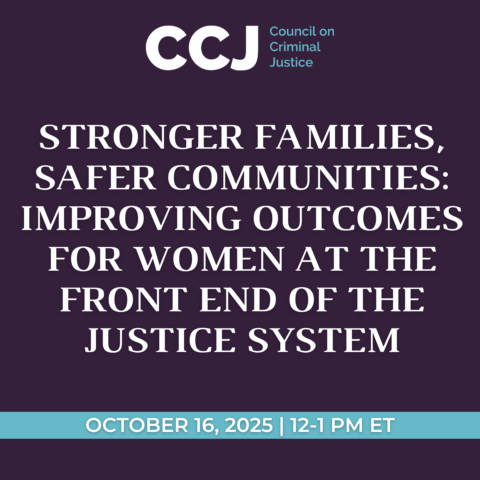New CCJ Analysis Also Documents a 59% Spike in Motor Vehicle Theft. Since 2019, With Thefts More Than Doubling in 8 Cities
EMBARGOED FOR RELEASE
5:00 a.m. ET | January 26, 2023
Contact: Jenifer Waren
jwarren@counciloncj.org
916-217-0780
WASHINGTON, D.C. – Most types of violent crime dropped in major American cities in 2022, but robberies and theft offenses rose as the nation emerged from the coronavirus pandemic, according to a new study of crime trends in 35 cities released today by the Council on Criminal Justice.
The analysis found that the number of murders in 2022 was 4% lower than counts recorded in 2021, representing 242 fewer murders in the 27 cities that publicly report monthly homicide data. The study estimates that the national homicide rate remained 34% higher than in 2019, the year before the pandemic began, and about half the historical nationwide peaks in 1980 and 1991. Fourteen of the 27 reporting cities tallied a drop or no change in homicide last year, ranging from decreases of 40% in Richmond, VA, to no change in St. Louis. Thirteen cities experienced increases, ranging from less than 1% in Houston to 48% in Raleigh, NC.
The report also presents an in-depth look at trends in motor vehicle theft, often called a “keystone” crime that facilitates the commission of homicide, drive-by shootings, and other offenses. After declining for three decades, motor vehicle theft began to rise at the onset of the pandemic and surged by 59% from 2019 to 2022, the CCJ analysis found. In eight of the 30 cities with readily available data, vehicle thefts had more than doubled; they more than tripled in Norfolk, VA, and increased by almost as much in Memphis and Chicago.
While acknowledging the encouraging drop in homicide numbers, the study’s authors urged leaders to intensify their anti-violence efforts, and CCJ announced the formation of a national Crime Trends Working Group that will probe the nation’s changing crime trends, attempt to better understand them, and help strengthen crime-control initiatives through improvements in the collection of reliable, timely crime data.
“While it is heartening to see homicide numbers drop, too many communities continue to lose too many residents to bloodshed,” said the study’s co-author, University of Missouri – St. Louis Professor Emeritus Richard Rosenfeld. “Research has validated a toolbox of strategies that reduce violence. What we need now is urgent action from our leaders and community members to accelerate crime-prevention efforts that give people a greater sense of safety and save lives.”
In addition to the homicide decline, the CCJ study documented drops in two other violent crimes in 2022: Gun assaults fell 7% (11 cities) and aggravated assaults declined 3.5% (19 cities) compared to 2021 levels. Robbery counts, however, traveled in the opposite direction. Robberies began to increase near the end of 2021, and by the end of 2022 there were 4,143 more robberies in 31 of the study cities—a 5.5% increase over the number in 2021. Still, the number of robberies remains 4% lower than pre-pandemic levels in 2019.
The CCJ analysis also shows that drug crimes fell by 2% in 2022 (19 cities), domestic violence incidents dropped by nearly 5% (11 cities), and residential burglaries also declined, by 2% (16 cities). Other acquisitive crimes, however, increased last year, including nonresidential burglaries (+11% in 16 cities) and larcenies (+8% in 29 cities).
Like motor vehicle thefts, carjackings also increased during the pandemic, but not nearly as much, despite receiving considerable media attention in Washington, D.C., and other cities. CCJ’s analysis found that carjackings rose by 24% between 2020 and 2022, peaking last summer before falling off. That finding, however, is based on just seven cities with readily available data.
About the Crime Trends Working Group
Rosenfeld, a former president of the American Society of Criminology, will chair the new CCJ working group, which will explore and attempt to explain crime trends and develop strategies to improve crime reporting nationwide as law enforcement agencies transition to a new FBI reporting system. Members will examine the new federal National Incident-Based Reporting System and assess the strengths and weaknesses of other data sources, including the Bureau of Justice Statistics’ National Crime Victimization Survey and the Center for Disease Control and Prevention’s Web-based Injury Statistics Query and Reporting System.
Launching this quarter, the panel will include more than a dozen leaders from academia, advocacy, law enforcement, government, and the public health sector. Findings will be summarized in regular bulletins and through periodic public web events, and members will produce a final report with recommendations for improving the national infrastructure for the reporting of crime statistics. The initiative follows CCJ’s Violent Crime Working Group, which examined what’s driving rising violence and released a violence-reduction roadmap outlining 10 immediate actions that don’t require legislation or major expenditures.
“Our need for credible, comprehensive, timely crime trend data is greater than it’s been in 30 years, and the nation’s inability to produce it invites speculation and manipulation and erodes public confidence in the justice system – and government more generally,” said CCJ President and CEO Adam Gelb. “If we’re going to have responsible public dialog and make faster progress toward safe communities, we need to have a much clearer picture of what’s happening and why.”
Support for the initiative comes Arnold Ventures, Georgia Power Foundation, the Harry Frank Guggenheim Foundation, Southern Company Foundation, Stand Together Trust, as well as #StartSmall, the John D. and Catherine T. MacArthur Foundation and other CCJ general operating contributors.
About the Report and Data
Co-authored by Rosenfeld, CCJ Research Specialist Ernesto Lopez and University of Missouri – St. Louis Graduate Research Assistant Bobby Boxerman, the new analysis updates a series of earlier reports with new data through December 2022. It examined crime rates for 10 offenses in 35 cities, including Atlanta, Detroit, Baltimore, Phoenix, Chicago, Denver, Memphis, San Francisco, Los Angeles, Washington, D.C., and Philadelphia. The smallest city in the sample was Richmond, VA, with 227,000 residents; the largest was New York, with more than 8.4 million residents. Not all cities reported data for every crime. The city sample is not necessarily representative of all large cities or the nation as a whole.
The data for this report was obtained within days of the end of the study period in order to provide a timely snapshot of crime in large cities across the nation. As a result, these figures will likely differ from data subsequently published by individual police departments or the FBI. For the most up-to-date information for a specific city, please visit its website.
About the Council on Criminal Justice
The Council on Criminal Justice (CCJ) is a nonpartisan invitational membership organization and think tank that advances understanding of the criminal justice policy challenges facing the nation and build consensus for solutions based on facts, evidence, and fundamental principles of justice.




